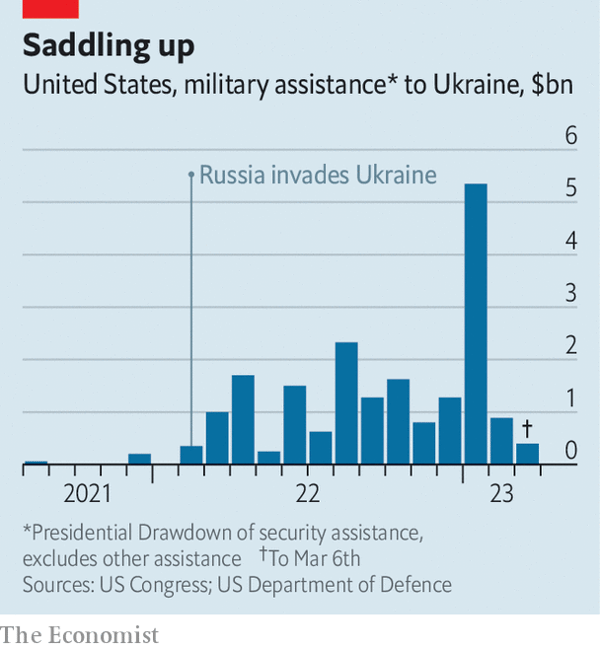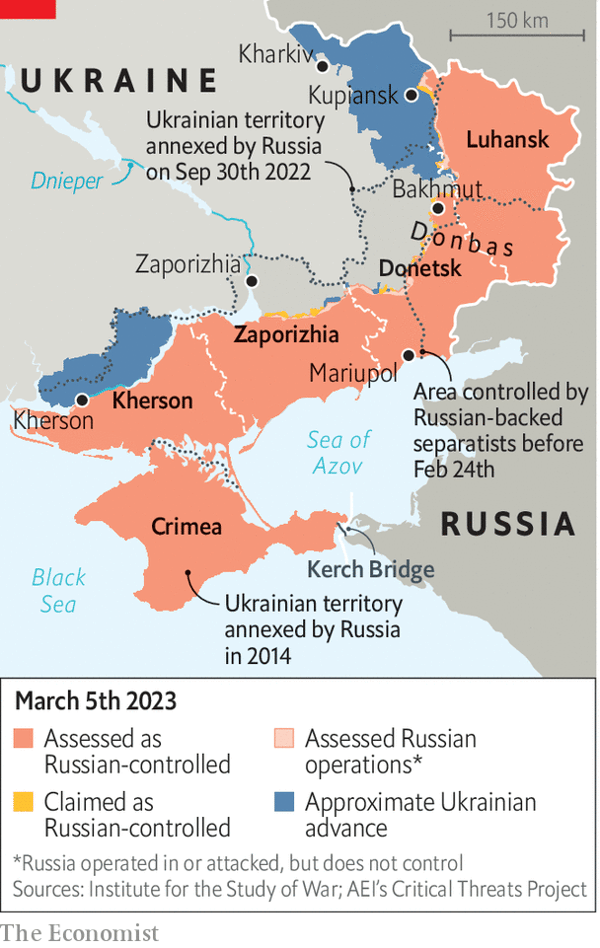
Ukraine increases its military capabilities in counter-attack preparation
Ukraine has recently received a substantial amount of military equipment from Western countries
The Economist writes about it.
the media recalls that Poland gifted Ukraine with the first Leopard tank, with more advanced Leopards, promised by Germany's chancellor, Olaf Scholz. However, only two battalions of the latest tanks have been pledged by European countries, and three battalions of refurbished Leopard 1a5s will also be purchased by Denmark, Germany, and the Netherlands for Ukraine. While all eyes are now on the battle for the eastern town of Bakhmut, attention will soon turn to an expected counter-offensive that may begin in April.
Various tanks, such as Challenger 2 and Abrams, as well as infantry fighting vehicles, will be added to the Leopards. Poland will send 60 modernized t-72s, in addition to the 14 Leopards and 250 Soviet-designed t-72s already sent to Ukraine. However, the focus on tanks has diverted attention from the more critical change in strategy. The West recognized that a prolonged war was not beneficial and that Russia was weaker than expected.
According to the publication, the mood, says one official involved in those discussions, was: “If we want something to change, we need to change something”. Consequently, in January, at the eighth Ramstein meeting, allies decided to provide Ukraine with enough equipment to form a division, with most of it scheduled to arrive by the end of March.

The Economist notes that arms flow to Ukraine surged from a trickle to a flood, with the Pentagon pledging over $8bn in military aid since December 9th alone. The infusion of arms agreed in Germany in January amounts to two-thirds of the total sent to Ukraine in all of 2022. The donations include crucial equipment such as armored bridge-laying vehicles. Ukraine’s army, which was mostly equipped with Soviet hardware, is being transformed, with the Ukrainian to Western kit ratio expected to fall from 5:1 to 5:2. That is, almost a third of Ukraine’s army will soon have nato-standard equipment. General Valerii Zaluzhnyi hopes to have three new army corps at his disposal, each with six brigades comprising more than 20,000 men.
The Russian offensive that started in January aimed to pressure Ukraine into using its reserves, hindering its ability to counterattack. Russian forces have made gains in Bakhmut, Donetsk region, but at a higher cost than the Ukrainians. General Zaluzhnyi has avoided the trap by not deploying troops to save Bakhmut, which is more symbolically significant than strategically valuable. Instead, Ukrainian troops are being trained in Bavaria by America's 7th Army Training Command to improve their ability to wage combined-arms warfare. This will enable them to fight in larger battalions and brigades.

The Economist article states that western officials are divided on whether the troops passing through Bavaria will be sufficient to remove Russia from the 18% of Ukraine it currently occupies. Ukraine's army is mostly inexperienced mobilized men, and the slow production of ammunition by Western allies is still a significant challenge. In the absence of air power, Russian warplanes may pose a more significant threat during any Ukrainian offensive. However, Russia's army is in dire shape and may have to deplete its reserves if it advances further into Donetsk, the article notes, quoting an EU official.
“If, after conquering Bakhmut, it decides to plough on deeper into Donetsk, it will have to further run down its own meager reserves. It might eventually start pulling units from other parts of the long front line, creating gaps that Ukraine can exploit,” suggests Gustav Gressel of the European Council on Foreign Relations. Ukraine's allies are monitoring for vulnerabilities.
On March 2nd, General Mark Milley visited Wiesbaden, Germany, to assist Ukrainian officers in exploring offensive options. While it is unlikely that Ukraine can fully reclaim its pre-war boundaries or retake Crimea from Russia in a single stroke, seizing another significant portion of occupied territory, as demonstrated by last year's successful offensives in the northeast and south, would dispel the belief that the conflict is at a stalemate, the article concludes.
- News














































